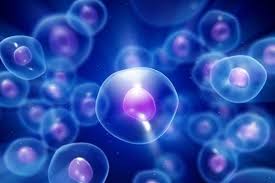Titanium nanoparticles Titanium nanoparticles Structure and function (PhD in nano-microelectronics)
Researcher and author: Dr. ( Afshin Rashid)
Note: Due to its unique density, corrosion resistance and good strength against competing materials such as aluminum, steels and superalloys, titanium has found a special place in many industries.
Titanium (Ti) is a durable, shiny, malleable, silver-colored metal with an atomic number of 22 that has high corrosion resistance and low density. This element has a special strength and has the highest ratio of resistance to density against other metal elements. The strength of this lightweight metal in the unmixed state is equal to that of steel, but it has a lower density. The resistance tolerance threshold of this element is 430 degrees Celsius. This metal is highly resistant to corrosion of seawater, sharp water and chlorine. Titanium and its alloys oxidize rapidly in air. Due to the reaction of titanium with the weather, an oxidation-resistant layer is formed and its thickness increases over time.The use of particles from micro-scale to nanoscale provides advantages for various scientific fields, but because a large percentage of their atoms are on the surface, nanomaterials can react greatly and pose potential risks to humans. To have with. Nanoparticles are highly regarded both in industry and in the natural sciences due to their widespread use. While natural materials have fixed physical properties regardless of size, the size of a nanoparticle determines its physical and chemical properties. Therefore, the properties of a substance change as its size approaches the nanoscale and the percentage of atoms on the surface of the material becomes significant.An important feature of all nanostructures is that the number of surface atoms in them is greater than the number of volume atoms. This ratio increases with decreasing nanoparticle size. Therefore, nanoparticle size is an important feature. The range of change in nanoparticle activity depends on the nature and shape of the nanostructure. With However, if the energy field of nano-particles with energy exposure to electro-magnetic analogy, and if within a certain wavelength, the occurrence of chemical reactions in materials under irradiation dramatic changes the activity of nanoparticles in the size of 100nm will be dramatic.
Nanoparticle surface atoms are not energy compensated. In general, the results of nanoparticle energy growth can be expressed as the total energy of the atomic surface atoms. The freedom of movement of atoms on the surface of nanostructures is limited, and only vibrational movements and electron motion are possible. These two electro-kinetic reactions are interdependent because the displacement of the electron clouds of atoms inevitably changes the vibrational frequencies of the bonds of nanoparticle atoms . On the other hand, the displacement of capacitance electrons in bonds changes the polarity of bonds and bodies called super molecules . In this case, electron transfer to a higher energy level is possible.
Conclusion :
Titanium (Ti) is a durable, shiny, malleable, silver-colored metal with an atomic number of 22 that has high corrosion resistance and low density. This element has a special strength and has the highest ratio of resistance to density against other metal elements.
Researcher and author: Dr. ( Afshin Rashid)
PhD in Nano-Microelectronics




